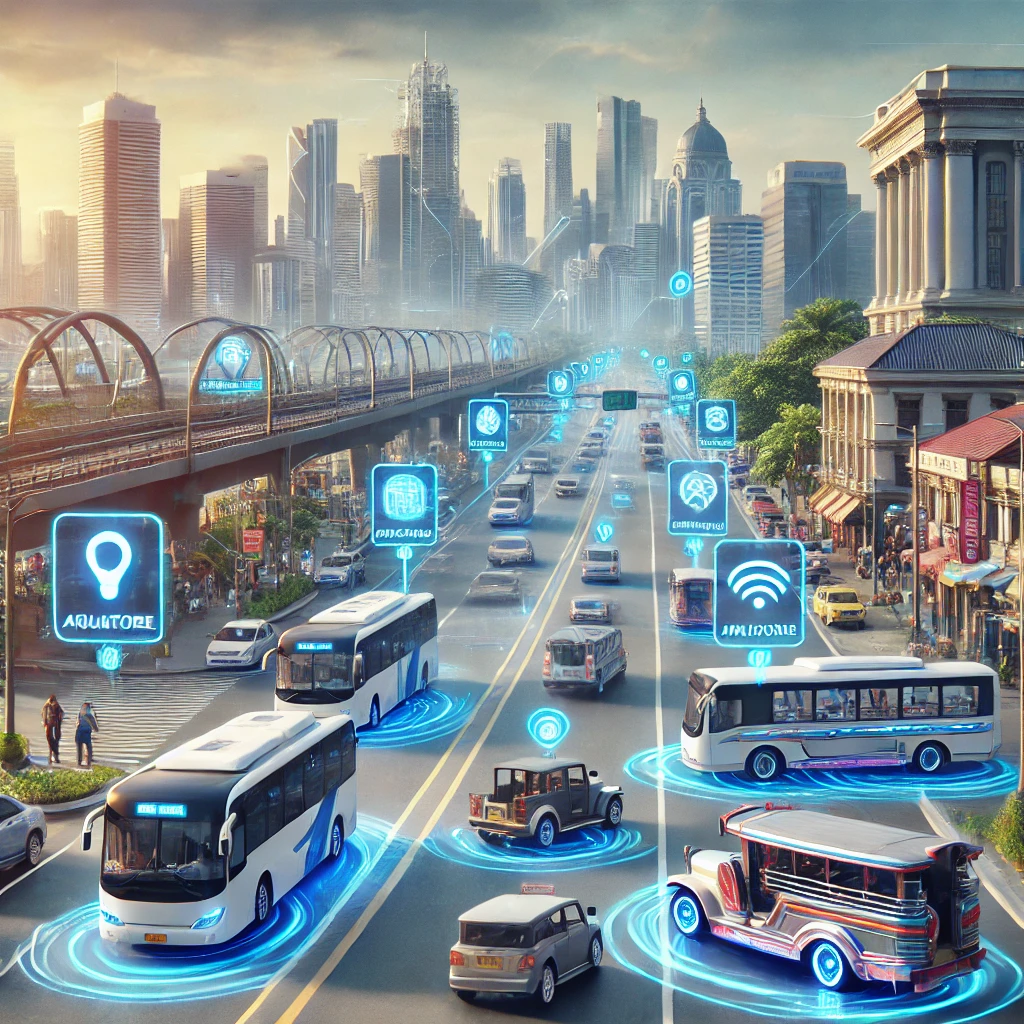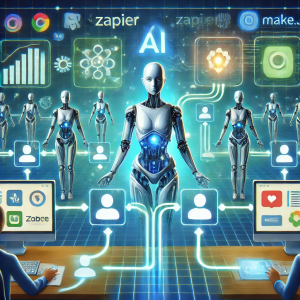The public transportation system in the Philippines has long been a topic of discussion, often with a sense of frustration among commuters. Overcrowded buses, congested jeepneys, and the infamous MRT/LRT delays have become part of the daily grind for millions of Filipinos. But what if Artificial Intelligence (AI) could step in and help resolve these long-standing issues? The integration of AI into the country’s transportation system offers a promising solution that could enhance the efficiency, safety, and overall user experience.
Current Challenges in the Public Transport System
The public transportation system in the Philippines faces several key challenges:
- Traffic Congestion – According to a report by the Japan International Cooperation Agency (JICA), the Philippines loses approximately ₱3.5 billion a day due to traffic congestion, particularly in Metro Manila.
- Inefficient Route Management – Buses and jeepneys often follow the same routes with little to no dynamic planning based on real-time demand.
- Overcrowding – Public transport vehicles, especially during rush hours, are packed beyond capacity, making commuting uncomfortable and unsafe.
- Safety Concerns – Traffic accidents and poorly maintained vehicles contribute to the risks faced by commuters daily.
- Lack of Data-Driven Decision-Making – The transportation system lacks comprehensive data collection and analysis, leading to poor infrastructure planning and management.
AI has the potential to address many of these issues through smart solutions.
AI Solutions for Public Transportation
- Traffic Prediction and Management
AI-powered systems can analyze traffic patterns and predict congestion points using real-time data from various sources such as road cameras, sensors, and even commuter smartphones. By identifying potential bottlenecks, AI can help traffic management agencies create dynamic routing systems. This could reduce traffic jams by redirecting vehicles and optimizing traffic light controls based on actual demand. - Dynamic Route Planning
Traditional bus and jeepney routes often remain fixed, leading to inefficiencies. AI can improve this by enabling dynamic route planning. AI can analyze passenger demand, weather conditions, and traffic patterns to suggest alternate routes in real time, maximizing efficiency and reducing travel time. AI can also help determine which vehicles should be deployed on specific routes based on expected passenger volumes. - Smart Ticketing and Passenger Flow Management
Overcrowding is a major problem, but AI could offer solutions through smart ticketing systems. These systems can predict peak travel times and adjust ticket prices accordingly, offering incentives for commuters to travel during off-peak hours. AI can also assist with real-time monitoring of passenger volumes at stations, allowing transport agencies to adjust vehicle frequency dynamically to meet demand. - Autonomous Vehicles
While still in its infancy, autonomous buses and shuttles could become a reality in the Philippines. AI-driven vehicles have the potential to provide safer and more reliable transport options. These vehicles can reduce human errors, which are a major cause of accidents, and can be deployed in specific areas, such as business districts or university campuses, where the infrastructure is more controlled. - Predictive Maintenance
One of the biggest challenges in the Philippine public transportation system is vehicle maintenance. AI can predict when buses, trains, or jeepneys are likely to experience technical issues, allowing transport operators to perform maintenance proactively rather than reactively. This reduces the risk of breakdowns that can cause major delays, ensuring a smoother and more reliable transportation system. - Crowd Analytics
AI-based crowd analytics can monitor the number of commuters at different transport hubs. With this data, authorities can deploy more vehicles during rush hours or redirect them to areas with higher demand. This ensures that resources are allocated more efficiently, reducing wait times and overcrowding.
Real-World Example: Singapore’s AI-Enhanced Transport System
Singapore has already integrated AI into its public transportation system with great success. The country uses AI to optimize bus schedules and adjust the frequency of services in real-time. By tracking the movement of buses and passengers, Singapore has been able to reduce waiting times significantly. The use of AI also extends to traffic management, where smart traffic lights adjust to real-time traffic flow, helping to reduce congestion.
Challenges in Implementing AI in the Philippines
Despite its potential, implementing AI in the Philippines’ public transportation system comes with its own set of challenges:
- Cost: The initial investment required to implement AI technology may be high, particularly in acquiring the necessary hardware and developing custom software solutions.
- Infrastructure: A robust digital infrastructure is needed to support AI-driven systems. The Philippines still lags in terms of internet connectivity and smart sensor deployment, both of which are essential for AI to function effectively.
- Data Privacy Concerns: The use of AI involves massive amounts of data collection, including real-time tracking of individuals. This raises concerns about data privacy and the potential misuse of personal information.
Conclusion
The integration of AI into the Philippines’ public transportation system offers a bright future with improved efficiency, reduced congestion, and enhanced safety. While challenges exist, these can be overcome with the right investments in infrastructure and technology. AI can create a smarter, more sustainable public transport network that serves the needs of commuters more effectively.
With proper planning and investment, the Philippines has the potential to leap forward and adopt AI-driven public transportation solutions, ultimately improving the daily lives of millions of Filipinos.
I, Evert-Jan Wagenaar, resident of the Philippines, have a warm heart for the country. The same applies to Artificial Intelligence (AI). I have extensive knowledge and the necessary skills to make the combination a great success. I offer myself as an external advisor to the government of the Philippines. Please contact me using the Contact form or email me directly at evert.wagenaar@gmail.com!
[SEO optimized]


Pingback: Coming up: - evertslabs.org